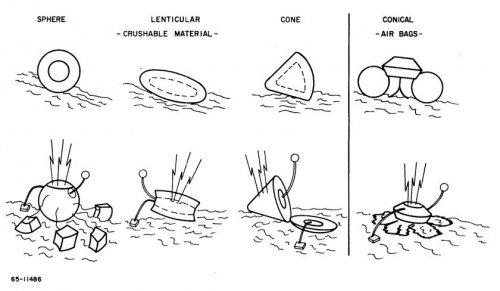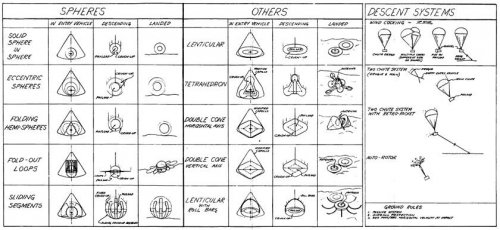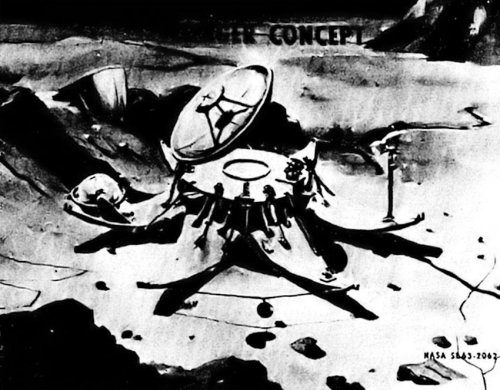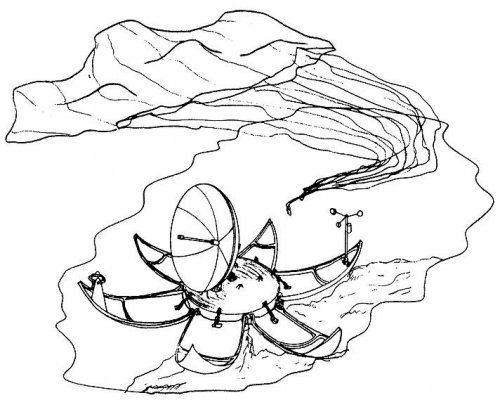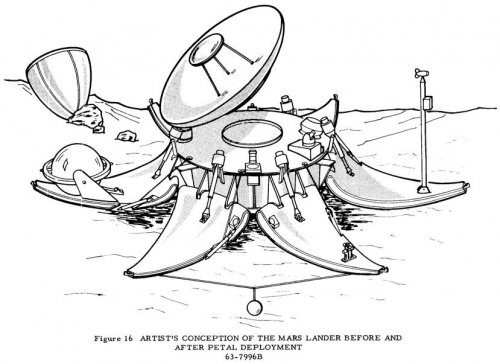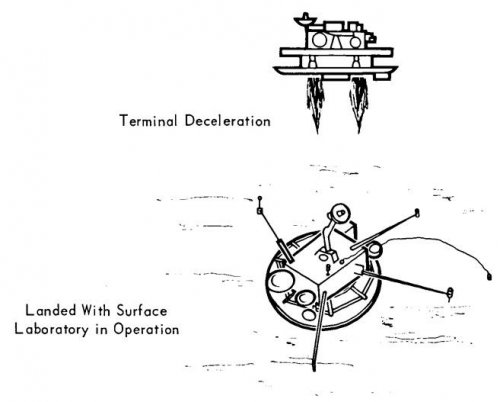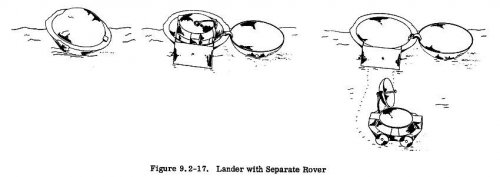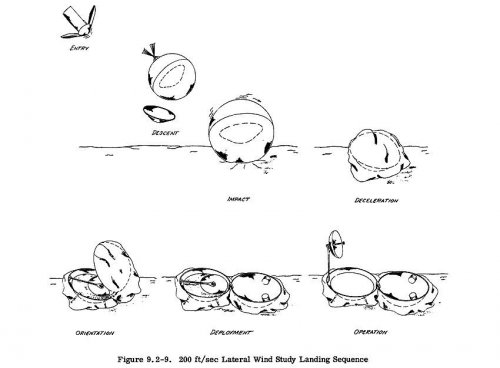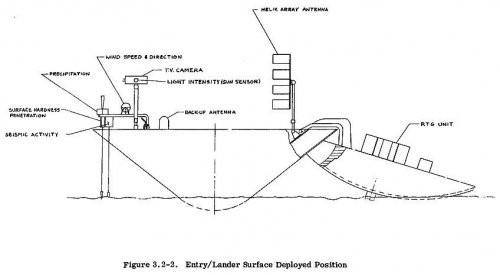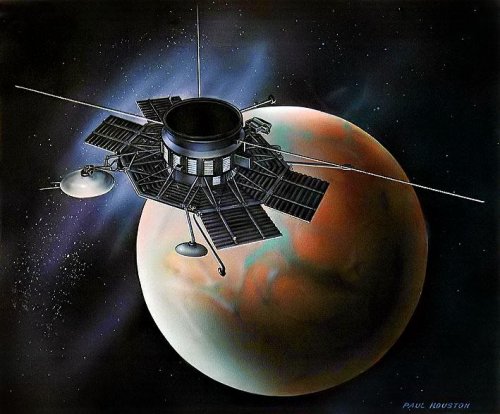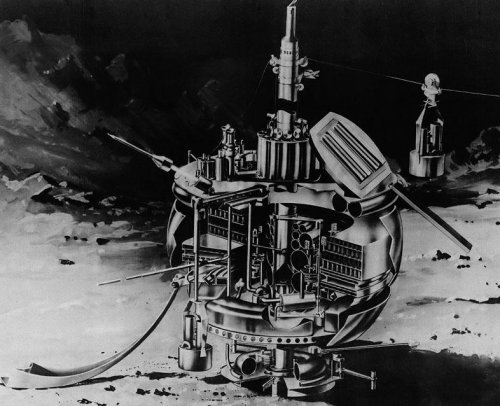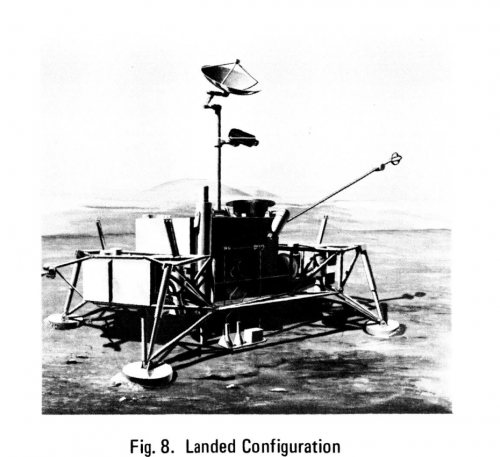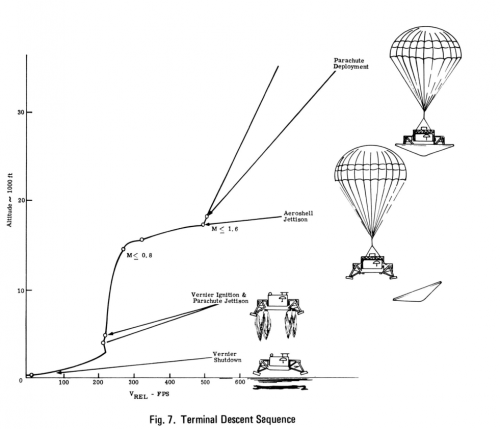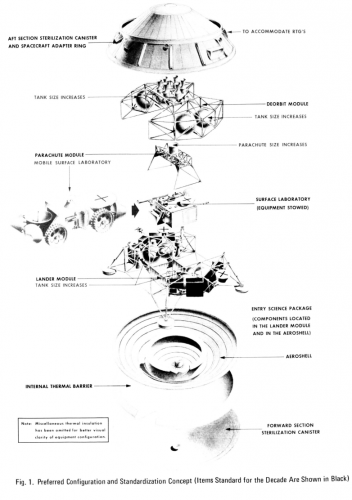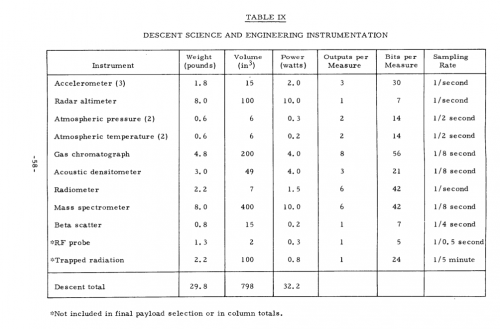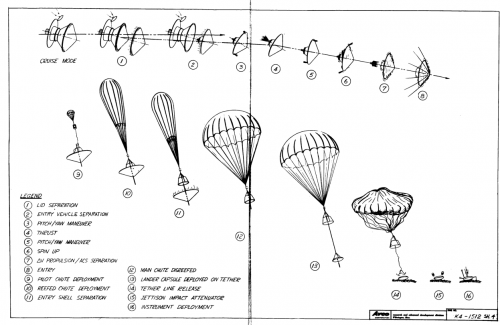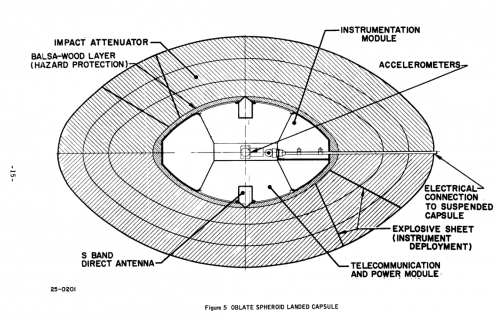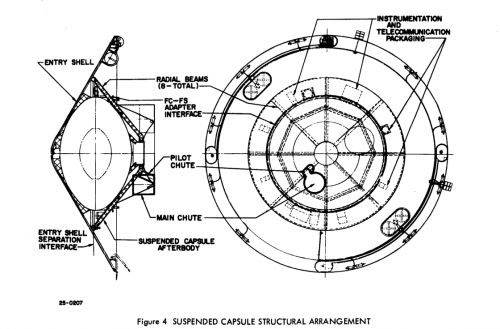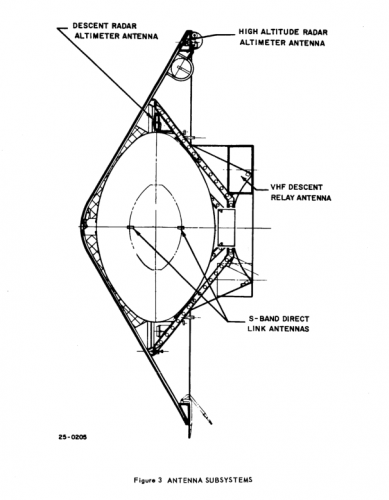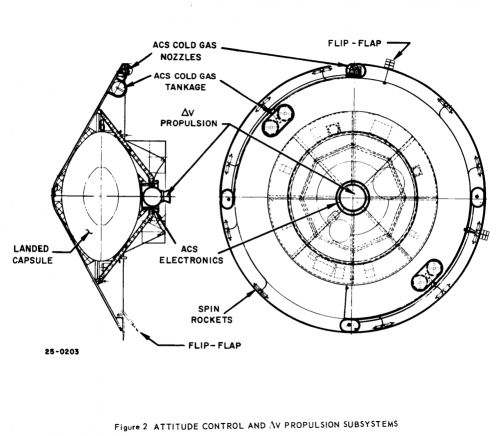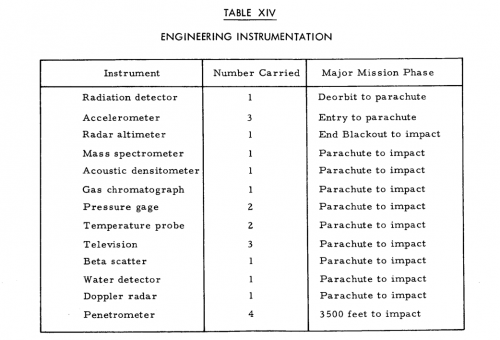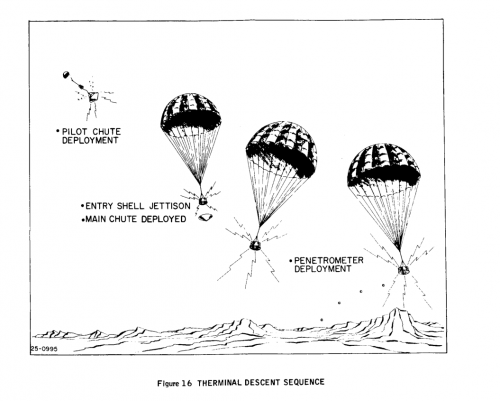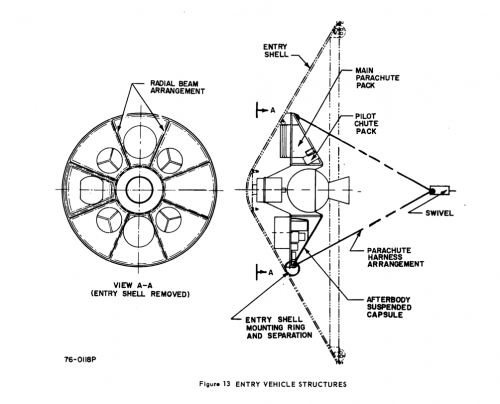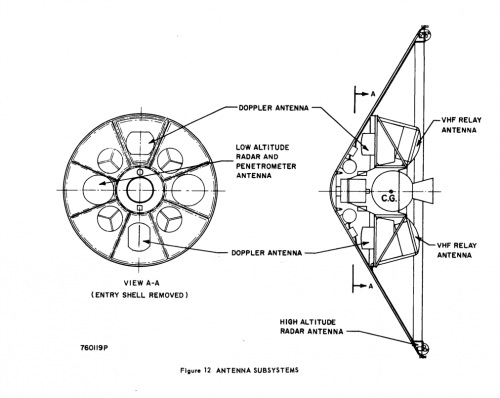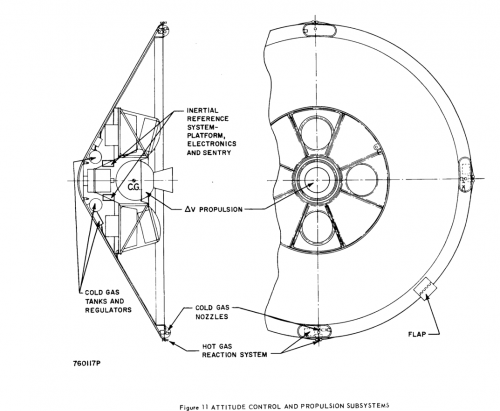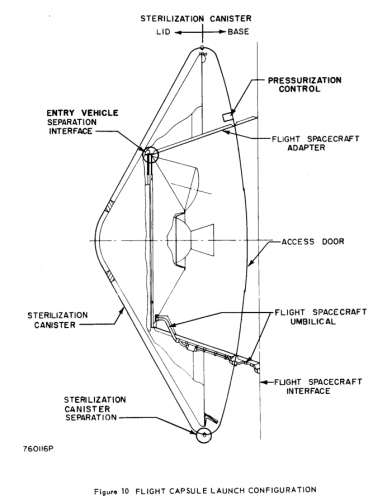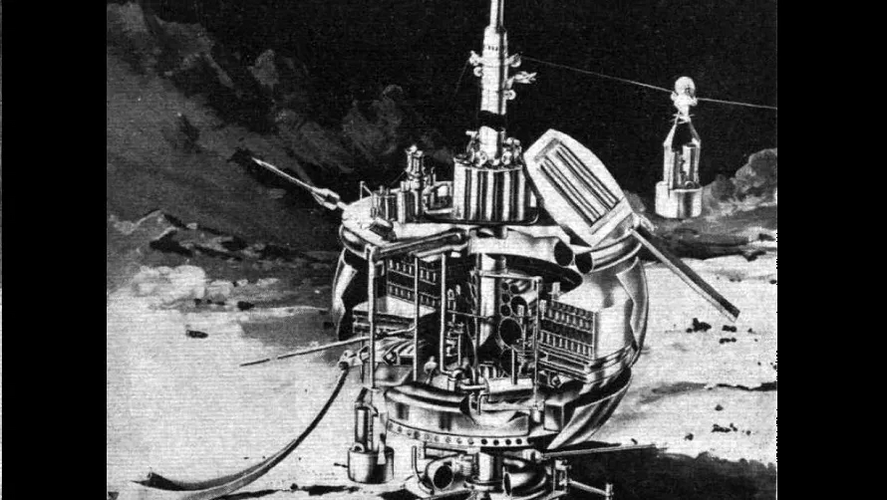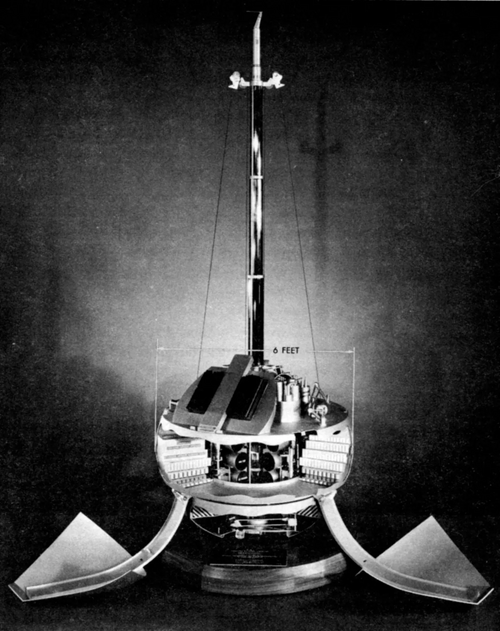Proponent said:
Somewhere I once came across a proposal to put a small landing capsule on Mariner 6 or 7. Would anyone know anything about this?
that start as Mariner B concept back in 1960
a fly-by bus (based on Mariner probe) pass Mars in 15000 km
and take picture with resolution of 1 km/pixel
it drops a landing capsule, in shape of a Corona/Discovery Spysat capsule
scientific payload are :
his barometers, thermometers, a mass spectrometer and a gas cromatographer)
and a camera to take pictures of the landing site.
planed were 4 Mariner B launch 2 to Mars 2 to Venus in 1964 with Atlas-Centaur
but that rocket had serious problems in 1962
so they change date to 1966 but that was already reserved to the Voyager Mars lander !
and canceling Mariner B.
as Voyager became to ambitious it was also canceled in 1967 by U.S. House-Senate
during October and December 1967
NASA proposed small hard-lander probe on Mariner 71 fly-by missions
and use of USAF Titan IIIC launch vehicle
Mariner 69 fly-by with Atlas Centaur
Mariner 71 fly-by with small hard-lander with Atlas Centaur
Mariner 73 with soft lander Probe on Titan IIIC (aka Titan Mars 73)
but that run in 1969 in project management and project budgets problems.
then Langley proposed:
to change Mariner 69 to fly-by with small hard-lander
JPL how ever had fix the design of Mariner 69 already in 26 May 1966 !
so the Small lander were canceled
more here
http://utenti.lycos.it/paoloulivi/marinerb.html
http://www.hq.nasa.gov/office/pao/History/SP-4212/contents.html
the picture show a small lander around 1965
developed by Philco Aeronutronic Company to study the possibility of a hard-landing entry probe

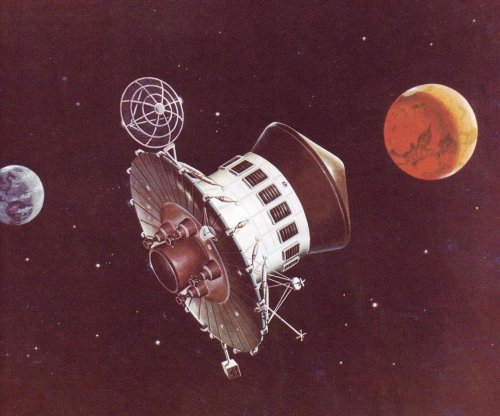
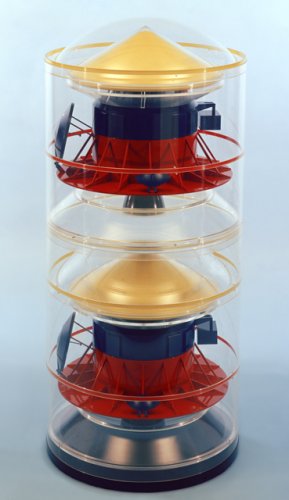
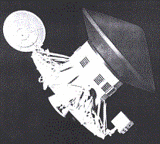
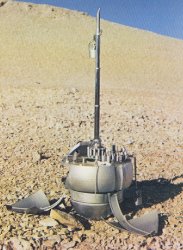
![ajman_1971_future_space_mi_966_ill_spacecraft_nasa_1962[1].jpg](/data/attachments/74/74496-d6973ef562b33a630afc11c1dbe8f202.jpg)
![ajman_1971_future_space_mi_966_ill_spacecraft_nasa_1961[1].jpg](/data/attachments/74/74495-3fdb3ae54ba891156f8219d89e35c3c6.jpg)
![ajman_1971_future_space_mi_966_ill_spacecraft_generalelectric_1967[1].jpg](/data/attachments/74/74494-557c4f863deb6332fadcef7d331f9060.jpg)
![ajman_1971_future_space_mi_966_ill_spacecraft_general_electric_1965[1].jpg](/data/attachments/74/74493-a5c0fa29cf86b809548eda9a257e8722.jpg)
![ajman_1971_future_space_mi_966_ill_spacecraft_general_electric_1963[1].jpg](/data/attachments/74/74492-ef702cf6edf48065aed6fbdd01513738.jpg)
![ajman_1971_future_space_mi_966_ill_spacecraft_boeing_1967[1].jpg](/data/attachments/74/74491-74db9172c39da6d2df5999c0a1ec0095.jpg)
![ajman_1971_future_space_mi_966_ill_spacecraft_avco_1965[1].jpg](/data/attachments/74/74490-e415ce883f6ccc548defd11f2cc55698.jpg)
![ajman_1971_future_space_mi_966_ill_spacecraft_avco_1963[1].jpg](/data/attachments/74/74489-713bda3b6e02cf631216aad04e3eb383.jpg)
![ajman_1971_future_space_mi_966_ill_spacecraft_trw_1965_3[1].jpg](/data/attachments/74/74504-9e7e3109c5a0a05e0df604a12331639f.jpg)
![ajman_1971_future_space_mi_966_ill_spacecraft_trw_1965_1[1].jpg](/data/attachments/74/74503-9cfb3d9b7431bf51c2d42315e83b1d6c.jpg)
![ajman_1971_future_space_mi_966_ill_spacecraft_north_american_1963[1].jpg](/data/attachments/74/74502-317d0ab7e8ad36ae1bb85680bacda139.jpg)
![ajman_1971_future_space_mi_966_ill_spacecraft_nasa_1965_4[1].jpg](/data/attachments/74/74501-e5aabdd70f160d93ca6159b5bc1cec27.jpg)
![ajman_1971_future_space_mi_966_ill_spacecraft_nasa_1965_2[1].jpg](/data/attachments/74/74500-052ad580c81334864a16779902a6676c.jpg)
![ajman_1971_future_space_mi_966_ill_spacecraft_nasa_1965_1[1].jpg](/data/attachments/74/74499-c8a9fbe4e21667588f7d59dca6e289bc.jpg)
![ajman_1971_future_space_mi_966_ill_spacecraft_nasa_1965[1].jpg](/data/attachments/74/74498-b5f58edfe10f4dedac7d512bd79b5990.jpg)
![ajman_1971_future_space_mi_966_ill_spacecraft_nasa_1962[1].jpg](/data/attachments/74/74497-d6973ef562b33a630afc11c1dbe8f202.jpg)
![fujeira_1972_kepler_mi_830_ill[1].jpg](/data/attachments/74/74517-4fc60919a553fdcbc61b71f6fc55cbfb.jpg)
![yemen_ar_1971_mars_mi_1395_voyager_conceot_var2[1].jpg](/data/attachments/74/74516-2c6ba5a16c671f54b2c03efff6c9ee0c.jpg)

